jsker
Reefing is all about the adventure
View Badges
Staff member
Super Moderator
Partner Member 2024
Excellence Award
Reef Tank 365
Article Contributor
Hospitality Award
Ocala Reef Club Member
R2R Secret Santa 2023
My Tank Thread
Follow along with the video below to see how to install our site as a web app on your home screen.
Note: This feature may not be available in some browsers.

I would suggest multiple dual CAFCI+GFCI circuits.I am looking to run a new circuit or two to my fish room. What would be your opinions of the ideal setup from breaker to outlet? Was looking to also install one of those DJ power pars that have multiple switched outlets . Thanks for the help!
Great thread. I like redundancy and as much protection against equipment failures as possible. Things like Heaters and power strips in our hobby have created more havoc then necessary with the occasional fun dip of lights into the tank...
My standard Copy/paste on this topic:
I would also suggest a CACFI along with GFCI
CAFCI will help protect your house from fire
GFCI will help protect you from electrocution
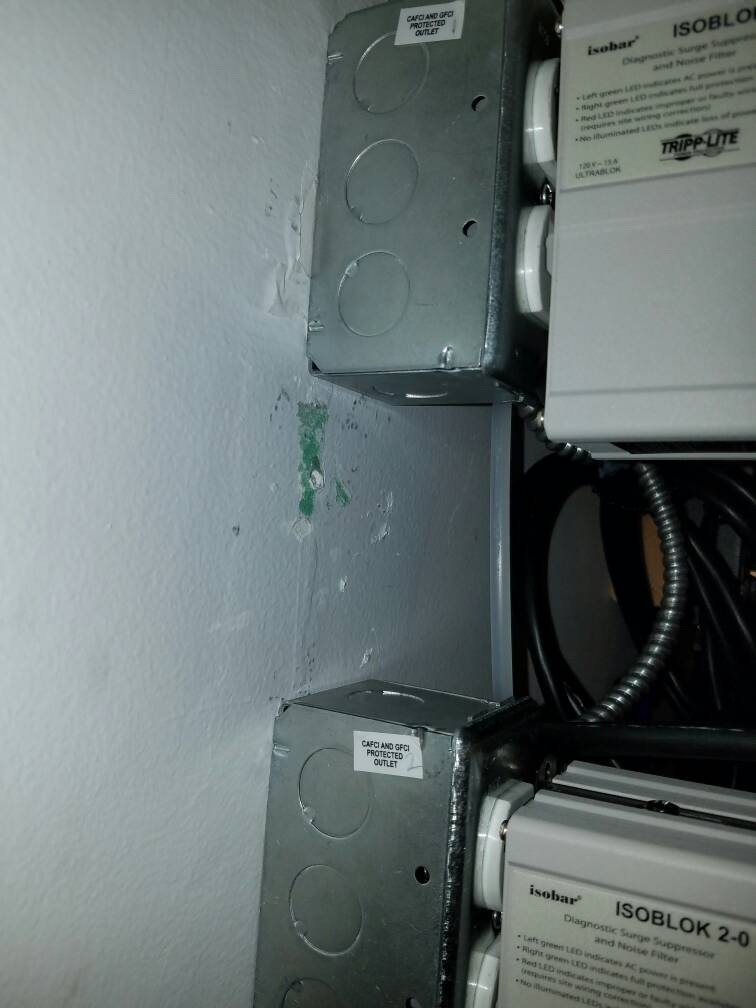
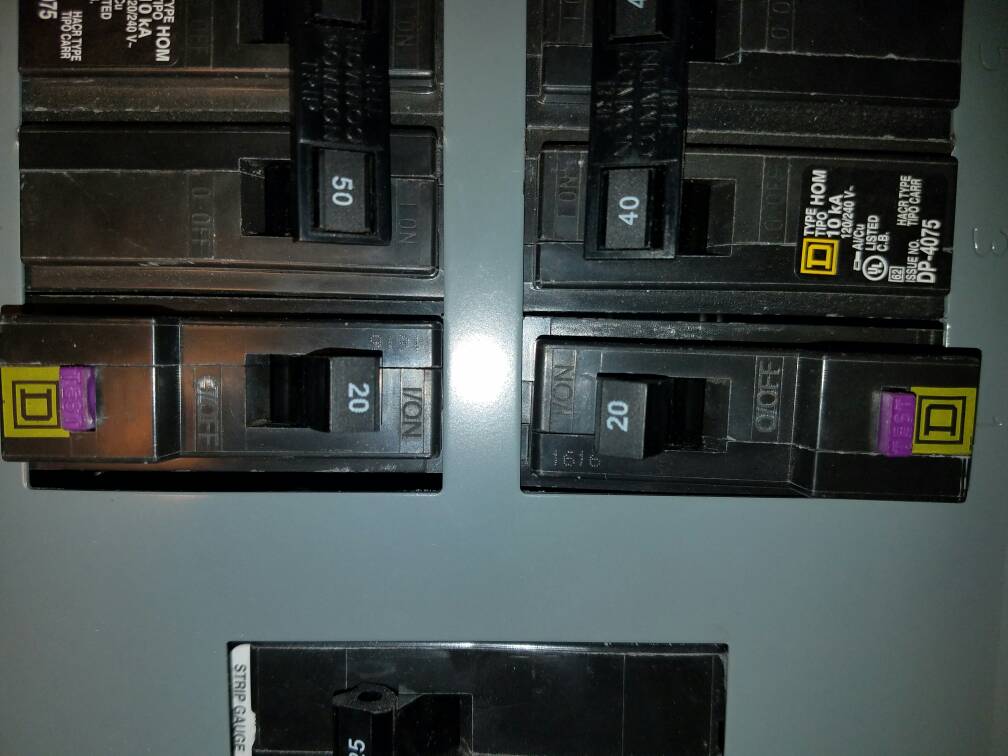
And a good surge protector will help protect your equipment.
Individual one shown above. Tripplite makes some good ones. Be warned some newer surge protection devices will stop power from flowing all together once it can no longer provide surge protection. This is actually a good thing IMO for many things like computers/tv/etc but NOT a good thing, again IMO, for many other things like refrigerators, freezers, our aquariums, etc. Some will make an audible alarm when exhausted which is nice too.
Plus a whole home. None last forever and will need replaced eventually based on how many surges and intensity of surges they've been hit by. Surges can come from outside your home, not just lightening strikes, and from inside the home.
Eaton Ultra and SquareD hepd80 are a couple good whole home surge protectors.
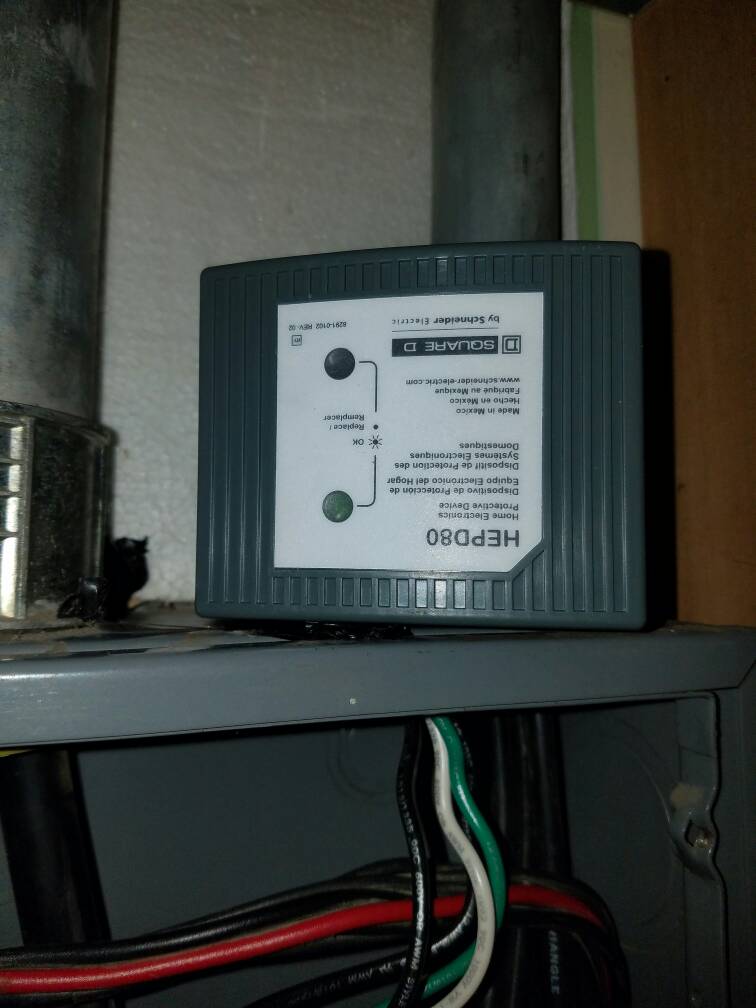
Plus having more then one circuit with life support spread across them. I have two additional circuits then what's pictured above to my main tank on the first floor with GFCI at the receptacles so its easier to reset them if tripped. Then the two shown in the picture above go to my basement sump with the GFCI at the breaker. Along with being a CAFCI. There are also AFCI breakers but don't protect against as many arc faults as a CAFCI.
And don't get confused by combination AFCI (CAFCI). That doesn't mean it combines GFCI with it. The packaging has to specify GFCI as well to support both CAFCI and GFCI. Sometimes called dual.
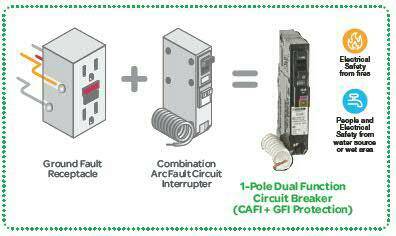
Here's some visuals
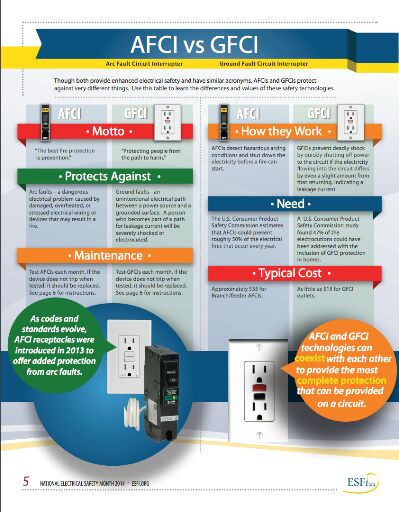
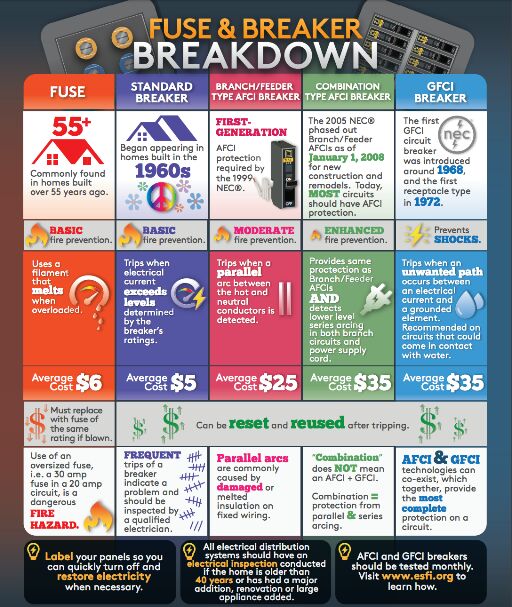
And CAFCI protects against both of these where AFCI only parallel
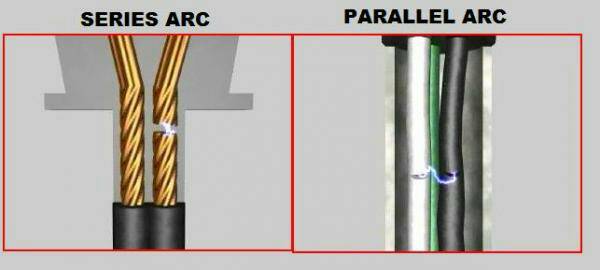
In the US the NEC will typically require a class A GFCI protection in places like a bathroom (fishtank) which trips at 6mA. Some places like commercial applications can use class C, D, or E that trip at 20mA.
http://m.csemag.com/index.php?id=9575&tx_ttnews[tt_news]=102229&cHash=89c8746cdc4a7fd8a3cb93f1d51ba57a
I dont recommend afci at all, but that is my personal opinion and not my "professional" opinionI would suggest multiple dual CAFCI+GFCI circuits.
I wouldn't suggest an AFCI either.I dont recommend afci at all, but that is my personal opinion and not my "professional" opinion
Good right up on how to wire a GFCI bit just wondering, since we are talking alternating current not direct current then why call the hot positive and neutral negative? If someone. Were to check polarity on dc with the multimeter well not good. I understand the simplicity in explaining it this way but if someone has an ok amount of knowledge about wiring to take on this task then I could see them easily confused if they say turned there plug around in the socket and the small motor rotates the same way. Or an even larger danger to someone with a background in dc current and thinks its like a battery cable, it all dead as long as I took of the hot wire. Just wanna through that out there as one who has been shocked a few times. I work with electricity also and its no fun to get zapped, especially if your GFCI has a feeder and is running to a 240 sub panel. Death right there.Disclaimer.
I am a licensed electrician, my way of doing electrical work is just my interpretation of the National Electrical Code and what I feel is good workmanship. Every electrician has their own interpretation of the code and in some cases do electrical work in other ways than I do. I am not saying my way is the only way, but it is how I have done it for eleven years now.
The most important thing to remember when doing electrical work is to make very good connections. Loose wires cause fires. This is no joke just a plain fact, that should be written in the Bible. :angel:The second most important thing to do is make sure all power is turned off before working on anything. Getting shocked sucks, believe me.
OK now that I am done with my rant I will do a step by step explanation on how to wire a GFCI with outlets protected by it down stream. : FIRST THINGS FIRST, disconnect all power.
The visual difference between a GFCI and a standard outlet, the GFCI is on the left.
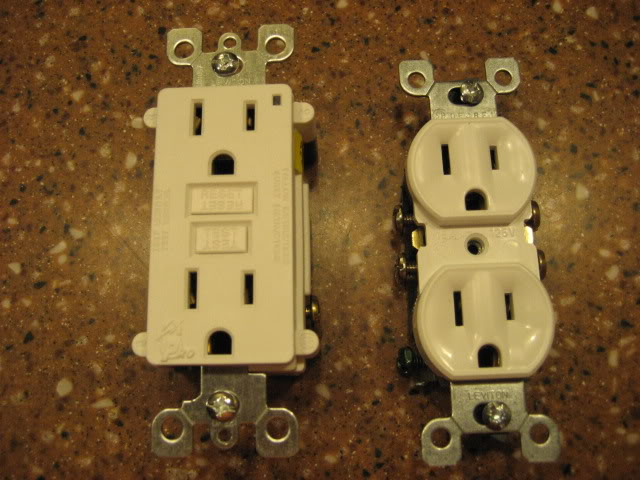
Now you can wire one GFCI up so it protects all other outlets downstream of it. Or you can just buy a GFCI for every outlet you want protected. It is cheaper to buy one GFCI and then protect each outlet downstream but it is a little more complicated to do it that way. I am not a prices guy but I think the GFCI's are about $10 ea compared to a buck or two for normal outlets. I am going to show you how to do it with one GFCI protecting other outlets in this thread.
GFCI's have two spots to put sets of wires in them, they are labeled LINE and LOAD. In this pic you will see LINE on the right side and LOAD on the left side.
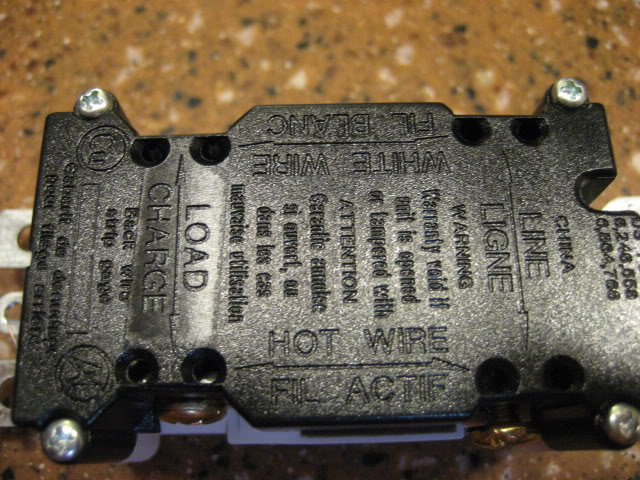
GFCI's need the power coming in to them to be on the LINE side of the outlet and whatever it is to protect downstream of the GFCI hooks to the LOAD side. Just remember the LOAD is what the GFCI is driving. Sorry my pic on the right the wording is cut off. It says power from panel.
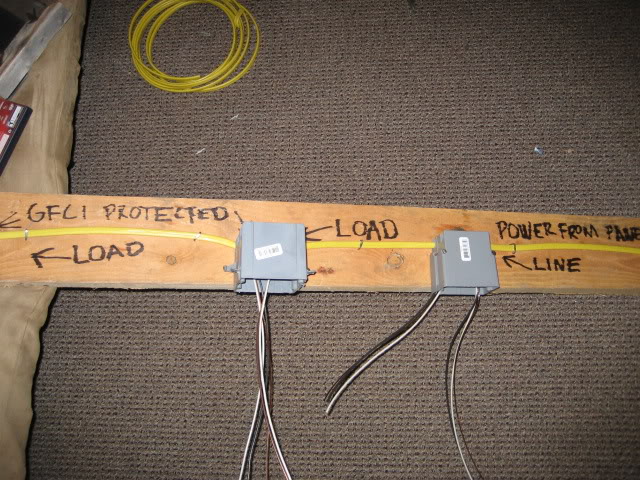
Now I have ran the wire in between the two boxes and in this picture you can see the wire coming into the box. But more importantly you can see the yellow outer shield "sheathing" of the wire. This pic is to demonstrate the proper amount of sheathing to be in the box. On the left you can see I have about 3/8" of sheathing in the box and on the right you can see I have about 1 1/4" of sheathing in there. This is a minimum and maximum amount. Also for stapling you don't want to staple too hard, just enough to hold the wire in place without cutting into the sheathing.
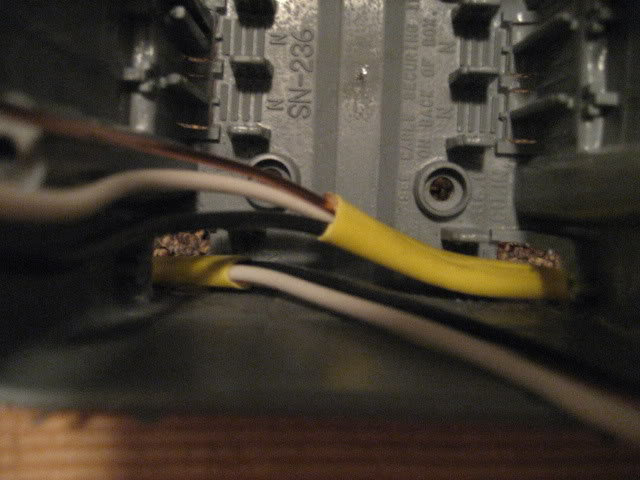
Now you will have black, white, and a bare or green ground wire. Now assuming your house is wired correctly, the black wire is almost always your power or positive wire. The white wire is almost always your neutral or negative wire, and the bare or green is your ground. On most GFCI brands you can usually put 2 power and 2 neutral LINE wires to the outlet. There should also be spots to put 2 power and 2 neutral LOAD wires to the outlet. But there is only one spot to attach the ground wire to the GFCI so you will need to wire nut them all together with a single "pigtail" to attach to the GFCI. I take and push all the ground wires down into the bottom corner of the box so they are all grouped together.
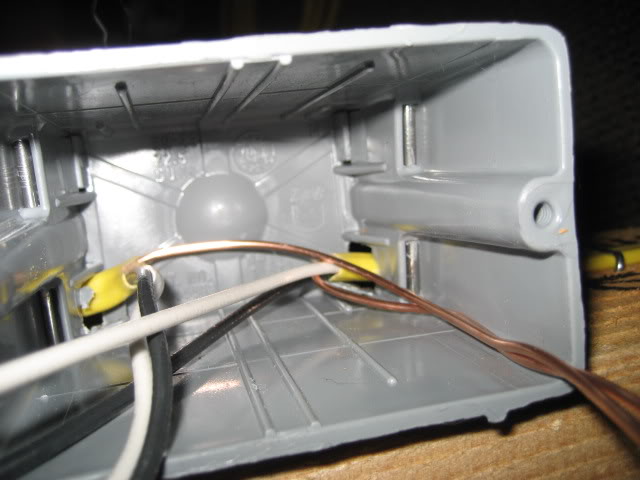
Then trim them all the same length about 2" out of the box. Next take a scrap of ground wire "approx 12 inches or longer" and wire nut it in with the wires coming out of the box. Once this is done neatly fold the wire nut and the wires back into the box.
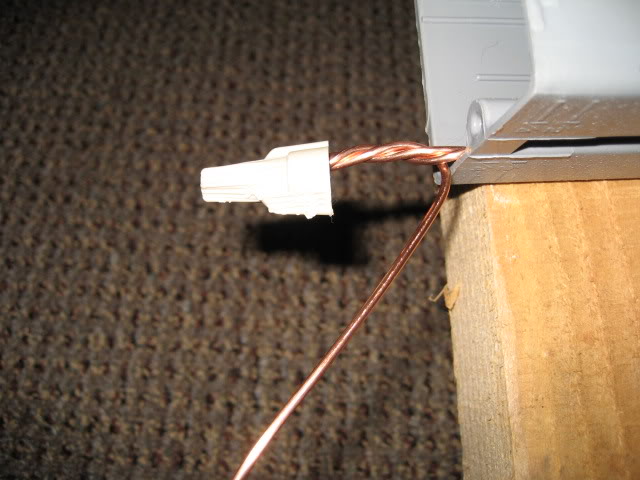
Next I take the set "black and white" that I know is my LINE "power coming from the panel" and gently twist them up to mark them as different than the others.
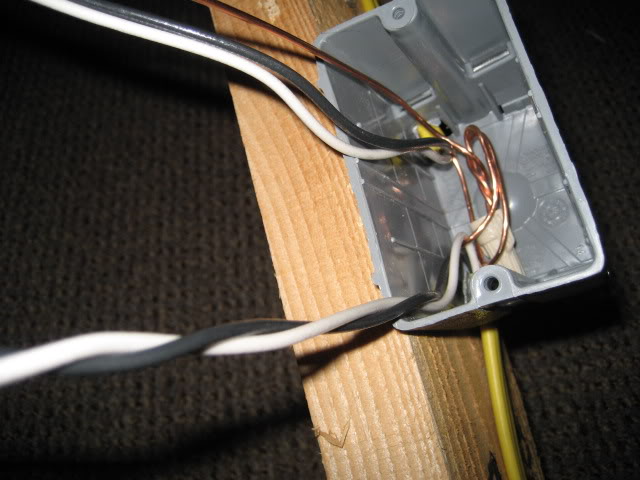
At this point you are ready to fold and cut all the wires to final length. I fold them all to the bottom and to the back as neatly as possible. Then I place my hand on them to measure, all you need is one hand length coming out of the box.
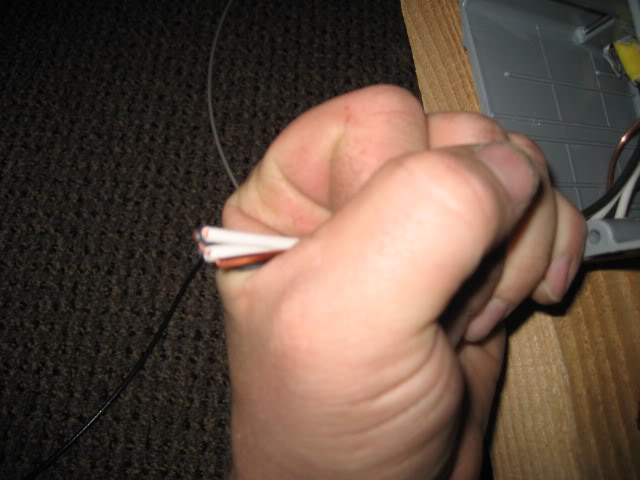
Next strip all the wires about 3/4" long, but I leave some of the wrap on the LINE wire.
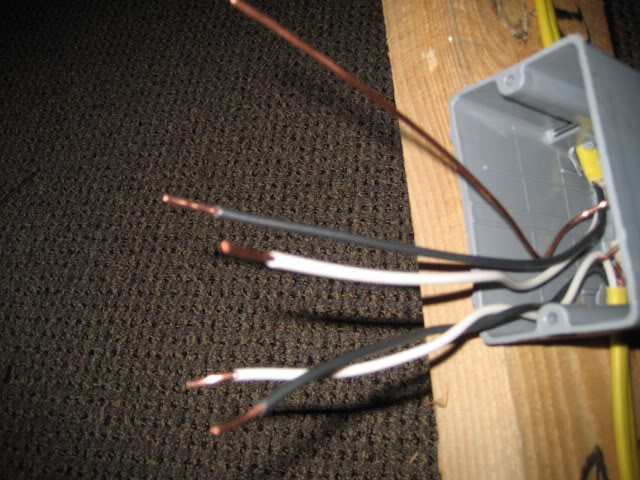
You are now ready to connect the wires to the GFCI. Remember it is important to keep your LINE and LOAD separate and hook them where they are labeled to go. One other way to know where where the power and neutral wire go's is that the silver screw is the neutral and the gold is the power. Notice no visible copper wire is showing, this is what you want. Exposed can short out.
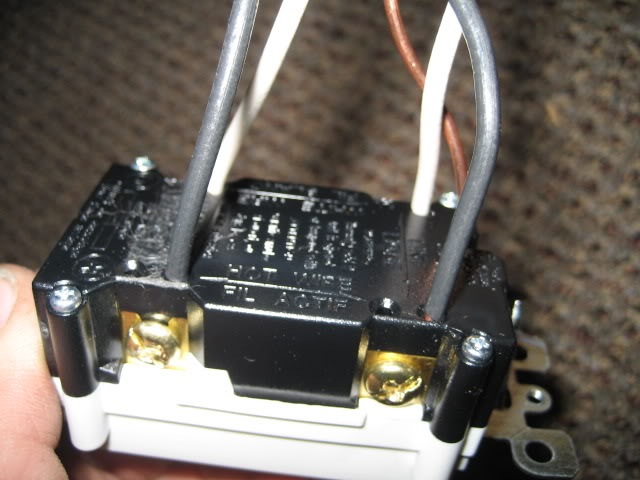
Finally you can neatly as possible fold the wire back into the box thus pushing the GFCI into the box as well. make sure your bare ground wire isn't touching any of the white or black screws or bare copper.
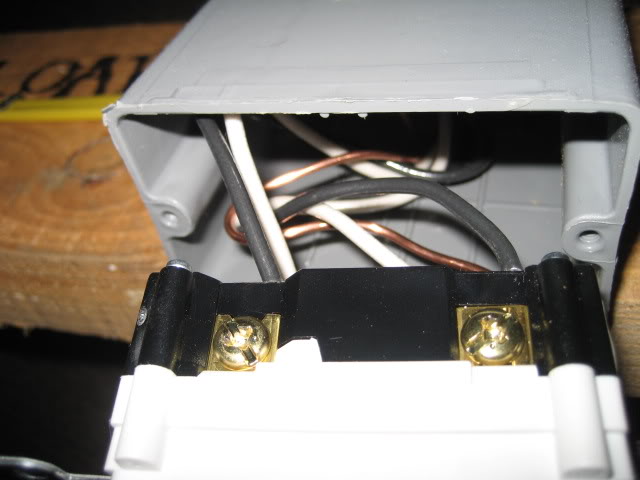
OK now screw in the GFCI and put the plate on and installation is complete.
Next I am going to show you how to install a 2 gang or quad outlet. Basically it is 4 spots to plug into in one box. You will need a 2 gang box for this. In my application I have a wire in and a wire out to the next outlet. Now remember these are all on the LOAD side of the GFCI and are protected.
One major difference in this application is you will need two ground wires, one for each outlet. In this pic I have the two ground pigtails and I have take one set of black and white wires and trimmed them to hand length. The second set of black and white wires I leave long.
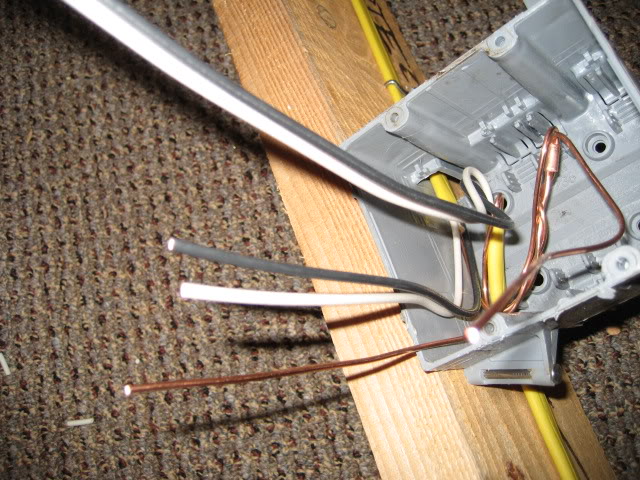
The long wires I strip at hand length and wrap it around the outlet screw. This leaves a long pigtail coming off of the screw. This pigtail later connects to the second outlet. Sort of a jumper. Notice I have my wires wrapped tightly to the screws and going clockwise so when I tighten the screw it pulls the wire under it instead of pushing it out.
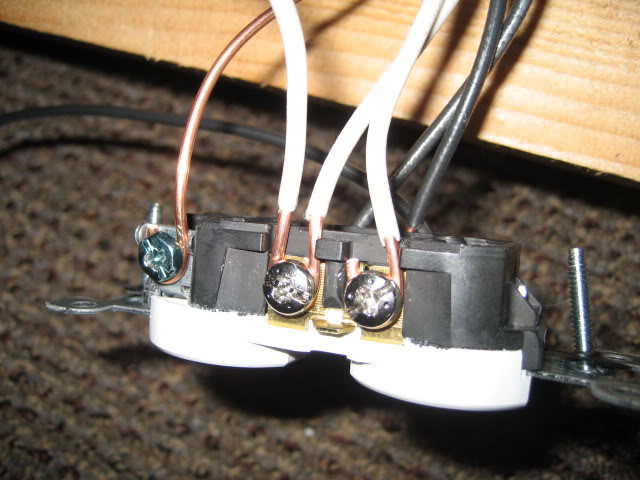
Once all connections are made to the first outlet you can screw it into the box. Then you will have the single ground, one long black and one long white wire left over. Push them into the back and bottom of the box and cut them hand length.
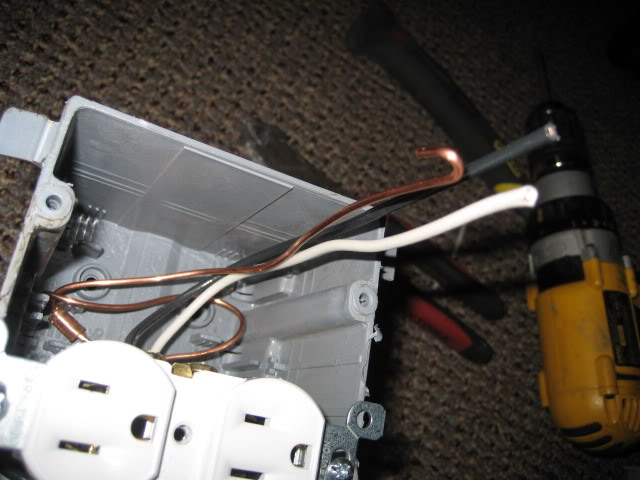
Then connect the second outlet up and screw it into the box, add your cover plate then you should be done.
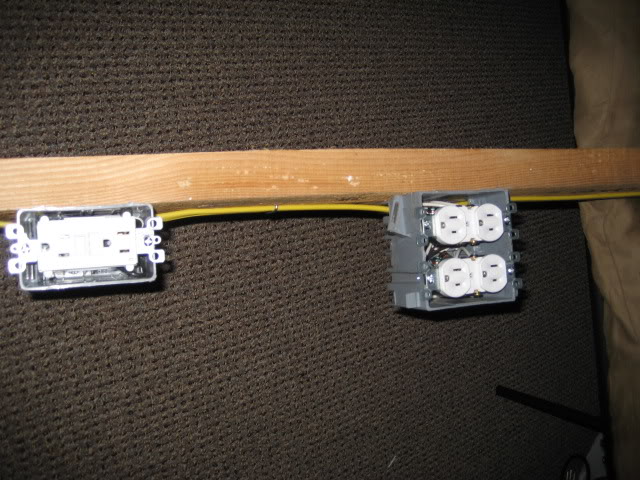
Turn your breaker back on and reset the GFCI, you should then have power to all your outlets.:smile:
If you have any questions please feel free to ask!
Ok one last final rant :sad:
You need GFCI outlets, plain and simple with no exceptions. There is a lot of debate on this. Some people say well what if you aren't home and the GFCI trips. My response to that is what if you are working on your tank with your arm in the water while standing in a puddle and the water comes in contact with the electrical outlet. Simple, the GFCI trips. Now imagine the same scenario but with no GFCI protection and lets throw in a heart condition that you didn't know about. What happens is you get shocked, the electricity takes the quickest path to ground which just happens to be through your body to the wet puddle you are standing in. The electricity flows through your body and in doing so passes through your heart causing it to cease to beat. Now what is a bigger problem, your heart beat stopping or you take doing a full on nuke caused by a tripped GFCI while you were away? I do realize I just threw a lot of what if's out there but I truly feel I don't want the chance of a what if to happen to me, do you?
half of you probably think its OK to stick a penny in the fuse box.
fyi. you cant have more than one gfi outlet on a single circuit.
get the af/gf breaker installed in your box. do not try to do this yourself for safety reasons etc etc
i was an electrician in a former life. now i talk to judges.
